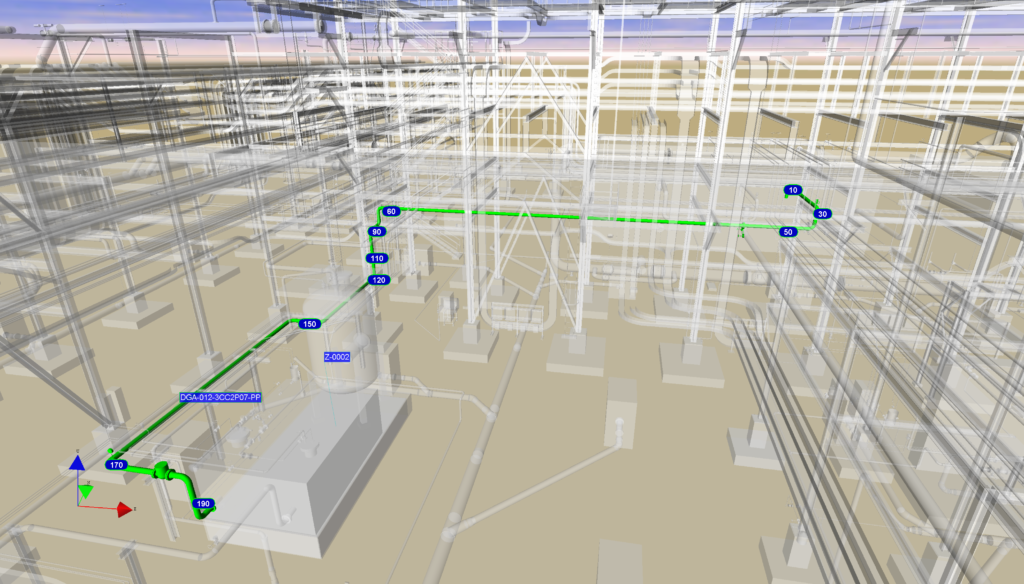What is a Digital Twin and how does it benefit industrial businesses?

What is a digital twin?
A digital twin is a 3D virtual replica of a physical object or system. In terms of industrial businesses this could be oil & gas refineries, manufacturing facilities, or utility power plants. A digital twin is a form of enterprise asset management software that allows for remote operations and predictive maintenance of these facilities.
The term “digital twin” was first coined in 2002 by Dr. Siegfried Zielinski, a German scientist and professor at the Berlin University of the Arts. The purpose of a digital twin is to provide an accurate and real-time representation of a physical object or system. This can be extremely beneficial for industrial businesses, as it allows them to detect faults and potential problems with their products before they become an issue resulting in less downtime and greater productivity. It also allows companies to optimize their processes and improve product quality.
How does a digital twin work?
A digital twin works by using an initial 3D scan of the object or structure. IoT sensors are added to the asset to collect data about a physical object or system. This data is then used to create a virtual replica of the object or system. Sensors will then relay the physical object’s performance to the digital twin. Such data points can include energy output, weather conditions, or up and down time.
The digital twin can then be used to monitor the object or system in real time, and it can also be used to run simulations to predict how the object or system will behave under different conditions. This helps businesses to optimize their processes and avoid potential problems.
What are the benefits of a digital twin?
There are many advantages of using a digital twin for industrial businesses. One of the main advantages is that it can help businesses understand and predict how the asset will behave under different conditions. This helps businesses to improve their decision-making and to reduce costs.
Some additional benefits a digital twin can provide for an industrial business include:
1. Reducing downtime by identifying potential problems before they occur
2. Improving quality control by monitoring products throughout the manufacturing process
3. Reducing costs by optimizing processes and reducing waste. Remote operations also allow industrial businesses to reduce the amount of resources to monitor the asset.
4. Increasing customer satisfaction by providing a personalized experience
5. Improving safety by identifying hazards and risks through preventive maintenance
6. Reducing carbon emissions with fewer trips to the facility, since the fuller scope of what needs to be looked at can be better and more proactively coordinated through the use of a digital twin.
What are some of the challenges of using a digital twin?
There are several challenges that need to be considered when using a digital twin. One challenge is data privacy and security. The digital twin contains data that can be sensitive, so it is important to consider how to protect this data. Another challenge is accuracy. The digital twin must be accurate in order to provide useful information. If the digital twin is not accurate, it can lead to incorrect decisions being made. Finally, scalability. The digital twin must be able to scale as the physical object or system changes. If the digital twin cannot scale, it will become outdated and unusable.
How to create a digital twin for your industrial business
There are a few things that you need to consider when creating a digital twin for your business. Firstly, you need to decide what data you want to include in your digital twin. This data will need to be accurate and updated in order to be useful. Secondly, you need to think about your current industrial business and how it is connected to IoT. Does it have all the correct sensors in order to be able to monitor data you are looking for? After that, you need to think about how you will keep your digital twin up-to-date. As the physical object or system changes, you will need to update your digital twin accordingly. This can be done manually or through automated means. Lastly, you need to consider how you will protect this data. Data privacy and security are important considerations when using a digital twin.
If you take the time to consider these things, then creating a digital twin for your business can be a very valuable tool.
The future of digital twin
Digital twins are becoming more and more popular as they offer a multitude of benefits to businesses. As the technology continues to develop, it is likely that digital twins will become even more widespread and used in a variety of different industries.
One potential future use of digital twins is in the medical industry. Digital twins could be used to create models of patients, which would then be used to test different treatments. This would allow for far more personalized and effective treatment plans.
Digital twins could also be used in the construction industry. Construction projects are often very complex and involve a lot of coordination between different teams. By using digital twins, construction companies would be able to plan and coordinate their projects more effectively, which would lead to shorter project times and lower costs.
Conclusion
Digital twins are becoming more and more popular as they offer a multitude of benefits to businesses and have a lot of potential uses. As the technology continues to develop, it is likely that digital twins will become even more widespread and used in a variety of different industries. We can only imagine the ways in which digital twins will be used in the future.